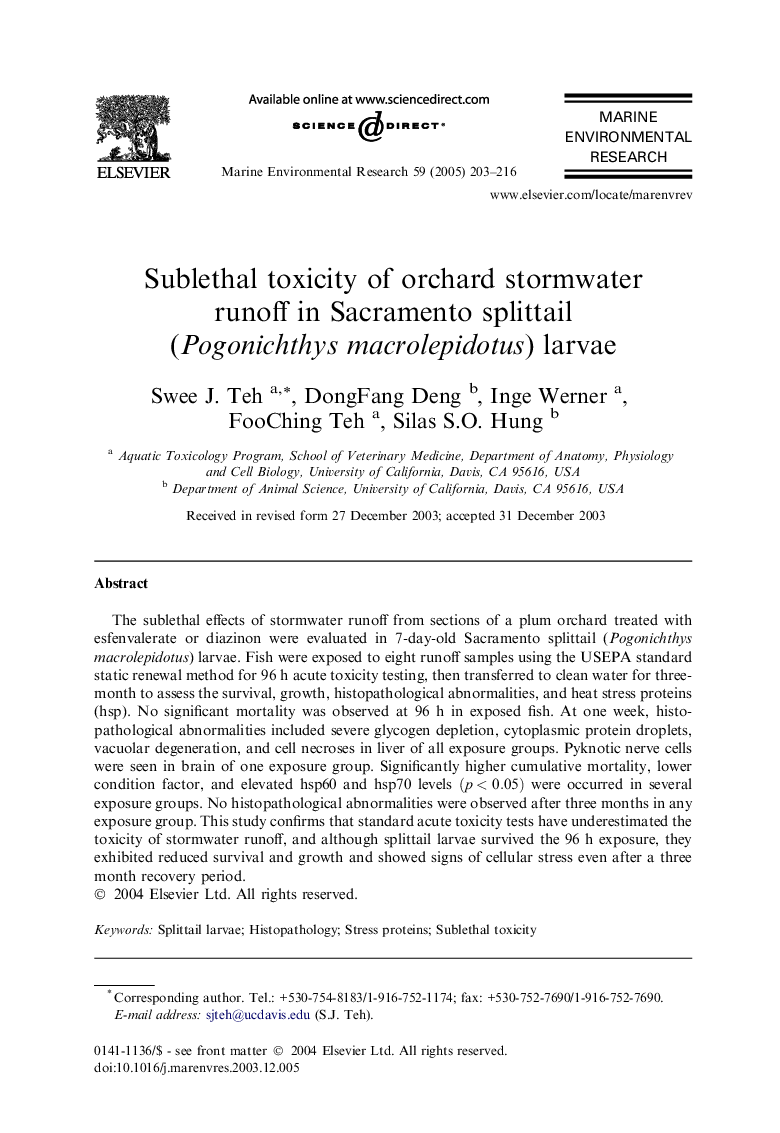| Article ID | Journal | Published Year | Pages | File Type |
|---|---|---|---|---|
| 9484385 | Marine Environmental Research | 2005 | 14 Pages |
Abstract
The sublethal effects of stormwater runoff from sections of a plum orchard treated with esfenvalerate or diazinon were evaluated in 7-day-old Sacramento splittail (Pogonichthys macrolepidotus) larvae. Fish were exposed to eight runoff samples using the USEPA standard static renewal method for 96 h acute toxicity testing, then transferred to clean water for three-month to assess the survival, growth, histopathological abnormalities, and heat stress proteins (hsp). No significant mortality was observed at 96 h in exposed fish. At one week, histopathological abnormalities included severe glycogen depletion, cytoplasmic protein droplets, vacuolar degeneration, and cell necroses in liver of all exposure groups. Pyknotic nerve cells were seen in brain of one exposure group. Significantly higher cumulative mortality, lower condition factor, and elevated hsp60 and hsp70 levels (p<0.05) were occurred in several exposure groups. No histopathological abnormalities were observed after three months in any exposure group. This study confirms that standard acute toxicity tests have underestimated the toxicity of stormwater runoff, and although splittail larvae survived the 96 h exposure, they exhibited reduced survival and growth and showed signs of cellular stress even after a three month recovery period.
Related Topics
Physical Sciences and Engineering
Earth and Planetary Sciences
Oceanography
Authors
Swee J. Teh, DongFang Deng, Inge Werner, FooChing Teh, Silas S.O. Hung,
